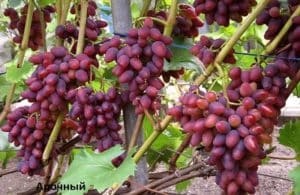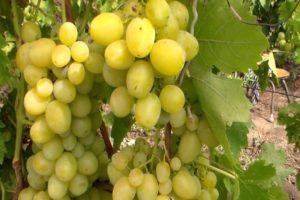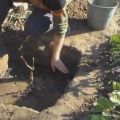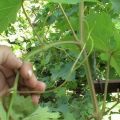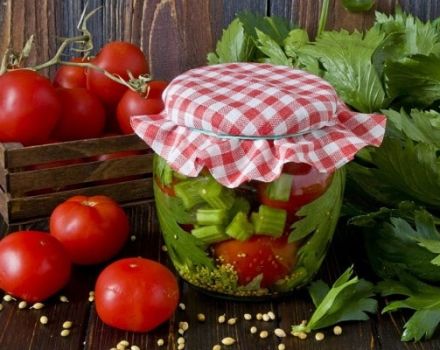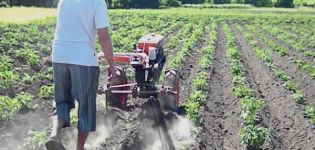Rules for planting, growing and caring for grapes in the Urals in the summer for beginners
Not all varieties of berries take root equally in different climatic zones and conditions - this is the rule. There are no exceptions to it. Therefore, practical advice on caring for grape bushes in the Urals or Siberia in summer will be useful for novice gardeners.
Grape varieties for the Urals
The popular wine berry has always matured better in the southern latitudes, where it was originally cultivated. Recently, special frost-resistant species have been bred for cultivation in cold regions. The local climate is characterized by a short but hot summer, which was used by the breeders. The best grape varieties for the Ural region are those that ripen in the period of 90-110 (early) and 115-130 (middle) days.
Most often, the following varieties are recommended, as tested in extreme conditions:
- memory of Dombrovskaya;
- memory of Shatilov;
- early pink nutmeg;
- Samokhvalovich;
- Beauty of the North (Olga);
- Aleshenkin;
- Lydia;
- Negro child.
This list of species adapted for cultivation in the South and Middle Urals is constantly being updated, work is underway to further improve the quality of grapes, such as yield and frost resistance.
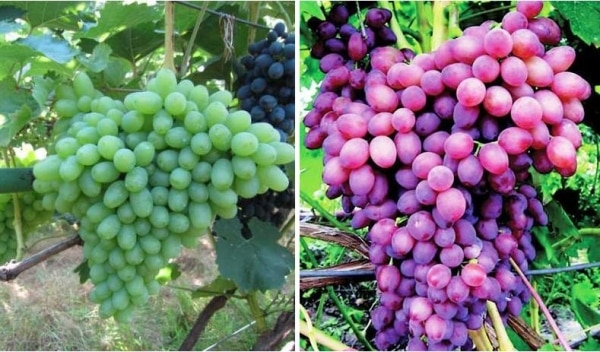
Experienced agronomists strongly recommend first planting species of Alyosha, Memory of Shatilov, Memory of Dombrovskaya, as less susceptible to cold weather, unpretentious, not requiring special conditions for breeding, and then move on to others.
Landing features
For the correct planting of grapes in the Urals, you need to know the rules for breeding shrubs, the nuances of choosing a place and time. There are a number of basic methods practiced by gardeners.
The result of the event depends on the practice of mastering the skills, understanding when to plant a particular variety and why.
Two methods are used: cultivation by seedlings and from cuttings. The best time for the first option is mid-summer, June-July. Consider the details of the landing.
Important:
- soil temperature (at least +15 ˚С);
- specific area of the site;
- soil condition.
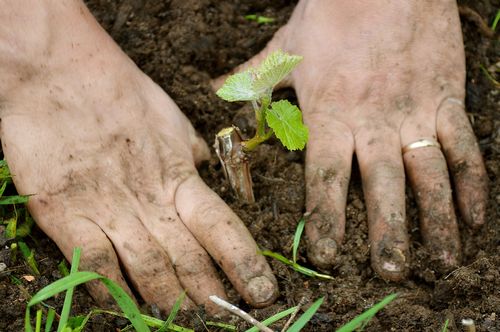
Grapes love the sun, the shade is destructive for him, as well as tall plants growing nearby. Therefore, the lighter, the more suitable the conditions for the growth of seedlings. Heavy soils impervious to air and water are not suitable: loose, systematically dug and fertilized soil is needed.
Planting pits are prepared at the rate of 1 square meter for each bush. An option is provided with the placement of grape shanks in a row: for this, a ditch of uniform width is dug along the entire length (meter), with the same depth. The length of the trench depends on the number of seedlings; there should be at least 100 centimeters between them. The recommended orientation is north to south.
The bottom is covered with a layer of drainage material (expanded clay, gravel), a combination is allowed. A soil mixture prepared independently from ordinary earth, sand and humus, taken in equal proportions, is laid on top. Sometimes mineral fertilizers (with phosphorus and potassium), ash left after burning leaves and branches are added there.
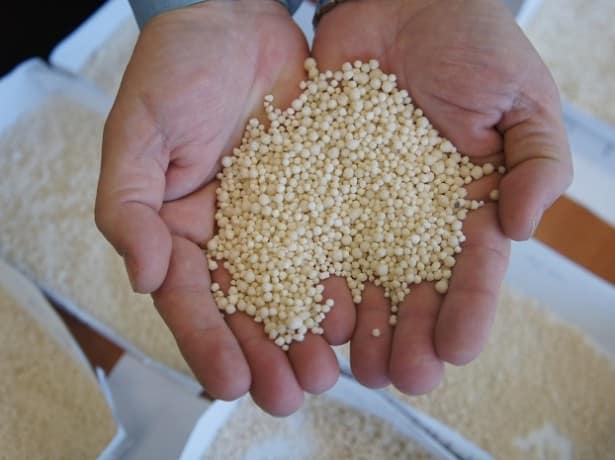
The soil in the pit is watered abundantly so that it compresses. Preparation begins 50-60 days before planting the shanks, in early spring (March-April). The ground level does not reach the top of the pit by 15-20 centimeters. In the middle of the resulting cake, a small hole is made, grapes are planted in it, ramming the soil around it and watering as the liquid evaporates from the soil.
The next year, the sagging ditch is filled up, at the same time spudding the adopted seedlings by about 25-30 centimeters, creating a roller of soil. Care should be taken withwatering: grapes loves water, but does not tolerate stagnant moisture.
Care and cultivation
Growing vines in the Urals has its own subtleties: greenhouses and greenhouses are not used, practicing planting in open ground with shelter with mulch and snow. Trimming the top is done after the appearance of a pair of vines (approximately the second year of development). Weak shoots are ruthlessly removed, leaving the strongest.
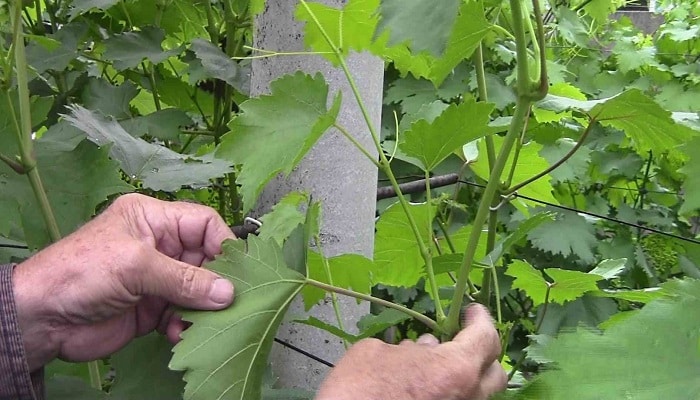
How to care for a vineyard in summer, in August: watering, stepson, pinching the upper vines, mulching. In the fall, the shoots are cut off, always leaving one of the male ones: it is needed for pollination. It is permissible to sow grass near the vineyard, which in the future will be used for mulch. Concerns in the summer (in July) include abundant fertilization of the soil with mineral complexes, the destruction of pests, treatment with drugs against diseases.
The subtlety of growing in a cold region is to control the growth of buds: in the Urals, grapes produce more of them than they can supply with the energy of the sun and the root system. Therefore, the "extra" ovaries are removed, leaving 3-4 pieces on one vine. When choosing from 2 adjacent brushes, the weak (smaller) is destroyed - this is how beginners are advised to grow grapes.
September is the time to "clean" the stems from the foliage in order to open the access of sunlight to the ripening berries. It is important not to overdo it here: shaded clusters will not be able to ripen, too open - they will burn in the sun. To create an opportunity for the vine to curl, to strengthen, they arrange supports, stretch the wire, and drop a pole or pipe with crossbars near the bush.
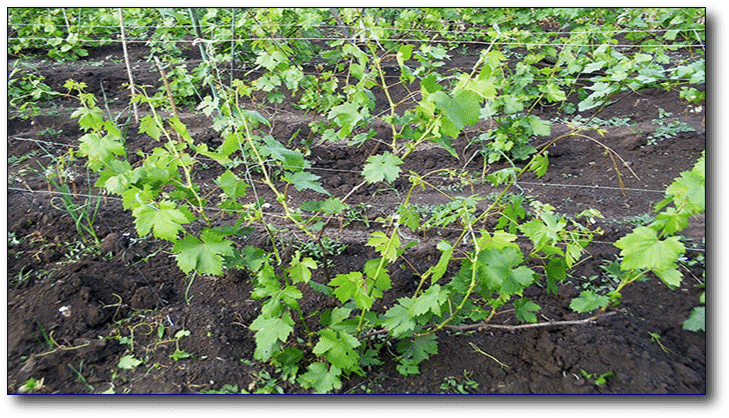
Compliance with the basic rules of care will allow you to grow large, sweet berries, collect a generous harvest. Neglecting them will lead to a gradual extinction of the vine, degeneration of the vineyard, death from disease, waterlogging, sunburn or cold.
Pruning tips
In autumn, not only chickens are counted: at this time they spendpruning grapes in the garden, picking berries and preparing for wintering. By carrying out these works, you can radically change the growth of the bush, weaken it or strengthen it (depending on the experience of the gardener and his understanding of the essence of the issue).
Vine contour shaping activities affect:
- For yield.
- Increase the size of the bunch and berries.
- Root system development.
- A comfortable transition of the plant to hibernation.
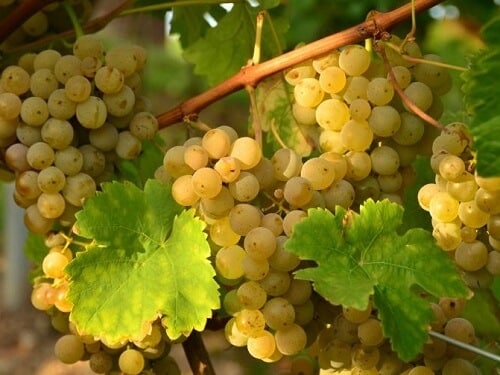
The importance of pruning is undeniable and should be understood by everyone, including novice growers. It is allowed to lead it throughout the entire growth and maturation season (removing weak stepsons). The main volume falls in autumn, when the harvest has already been harvested and the vine has been freed from heavy bunches.
In the summer, the areas that have dried up over the winter are successively removed, the buds are thinned out (the defective ones are removed), then the same is done with the sprouts. Of the stepchildren, no more than one male is left. Shoots should be divided into strong and weak, which interfere with the active development of the plant.
Pinch the grapes in the period from mid-July to the end of August, in the fall, starting to lighten the ripening bunches (removing the leaves that cover the sun, lower and damaged ones). At the same time, the fruit arms are formed. For the Urals, gardeners have empirically established a fan pattern for 4 vines. To do this, the strongest shoots are left on the stem (trunk) by sequential pruning. The first stage includes the removal of "extra" vines, whiskers, leaves. The shoots and the only stepson are shortened to 4-6 buds.
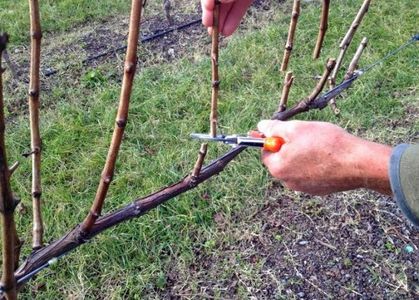
Next, the vines are fixed horizontally, bent to the ground, then sprinkled with a layer of mulch and prepared for wintering. The second stage, next year, involves the development of renewed vines from the abandoned buds, which will also be thinned out in the future. You need to leave the strongest, 2 on each sleeve, remove the remaining ones.
If pruning is done correctly in the fall, it will be possible to harvest the first crop from the developed vines. Experienced growers know that the most productive part of the sleeve is its middle: they are guided by this, forming a contour of 8-10 strong buds in autumn.
In the spring, a shoot is found at the base of the vine, from which it will be possible to make a substituted one (when the whole branch bears fruit and begins to need rejuvenation). After 3-4 years old vines are cut, leaving pre-selected young twigs. This scheme allows you to regularly get a harvest from a grape bush up to 30 years old, systematically removing weakened and "aged" vines, replacing them with renewed ones.
Shelter grapes for the winter
Before the start of the cold Ural winter, the grape bush is prepared for hibernation: it is freed from leaves, branches, bent to the ground and sprinkled with a layer of mulch (hereinafter referred to as snow). The subtlety of preparing for winter is that premature, hasty shelter will allow mold to develop, and this will lead to the death of the kidneys.

Work begins on the conservation of the bush when the average daily temperature drops to -5 ˚С, and the soil freezes in the upper part (about November). You should not pay attention to the excessive "delicacy" of the buds: in specially bred varieties, they calmly tolerate frosts of 20 ° C and more. It is forbidden to put vines on bare ground: it is wiser to use a wooden lattice, an old picket fence, a layer of pine or spruce needles.
Such a precaution is needed so that after the spring melting of the snow the vine does not become saturated with moisture and does not start to rot. The top covering is the same needles, spruce branches, tarpaulin.
For small bushes, they use "know-how": they fold the vine into a spiral, put it on a pre-made bedding, and then cover it with a bucket, an old basin or a wooden box. Then the resulting "house" is covered with any available material - leaves, straw, needles.
As soon as it snows, a layer of 40 centimeters or more is created over the storage area of the vines. If there is little precipitation, you will have to use slate, roofing felt, boards, the same tarpaulin, creating a layer of protection for the vineyard. It is important not to leave the vines on the trellises (so they freeze up, they will be irretrievably damaged) and thoroughly fix the shoots, preventing them from being damaged by gusts of wind.
